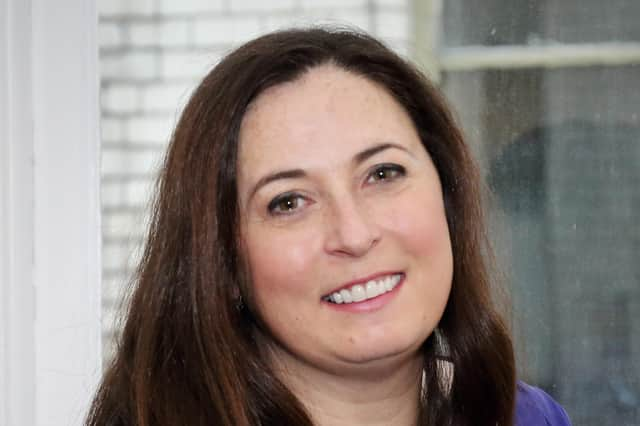How do we communicate in the new normal? Comment


In the face of such uncertainty, there is a clamour for control and clarity. One of the few things in our control and that can help provide clarity is how we communicate, whether with employees, customers, suppliers, partners and key stakeholders.
As a professional communicator with decades of experience this is always close to my heart, but never more so than now, when good or bad communication could make or break an organisation.
Advertisement
Hide AdAdvertisement
Hide AdOver the last three decades I have helped develop internal and external communications strategies supporting many organisational changes and challenges. This includes the integration of NatWest and Royal Bank of Scotland, involving significant restructuring to managing high-profile and very public crises.
Having been involved in dozens of positive and negative change situations, I have learnt a lot, and while it’s always great to be successful, it’s when the wheels have come off that I have learned more. So what can go wrong? At a time of significant challenge or crisis, it is easy to get sucked into that particular situation.
At the moment Covid is all-consuming, so this is very understandable. It is also still important to keep the wider vision and objectives in perspective. For example, if changes need to be made, what is the aim from an organisational perspective? To protect its long-term future in the face of the economic challenges as a result of Covid?
This sounds extremely obvious, but sometimes the wider vision and strategic benefits of change are missed from communications, with the current challenge being presented as the main issue in isolation from other key factors. At the core of effective communication and strong reputations is trust, and without it your message will never land well. On several occasions I have witnessed a sense of mistrust in the management team from the shopfloor.
Communication gap
Particularly in emotionally charged situations, this is driven by a gap in information, usually filled with rumour and speculation. Where there is a communication gap it is human nature to fill this. Employees sometimes assume leadership teams have all the answers but are not sharing this.
In my experience, especially in uncertain times, often the information is simply not available. It takes a very honest and secure leader to share openly that they don’t have all the answers when staff crave certainty, but this goes a long way to building trust.
A recent poll we undertook on LinkedIn showed that the most common complaint about communications in this context was unclear/confused messaging. This simply adds to uncertainty, yet with careful planning and consideration of the what and the how to communicate, it is possible to share even the most complex messages effectively.
Face-to-face communication may not always be possible. Video conferencing can never replace being in the same room, but it is a pretty good alternative. If the message is complex, it would always be helpful to follow this up with a further communication, and tools like video can help clarify information.
Advertisement
Hide AdAdvertisement
Hide AdFor example, one of our clients recently wanted to share clear health and safety expectations in advance of returning to a construction site. We worked with them to achieve this via a short video that conveyed the key messages clearly.
Particularly in intense situations, it is hard to remain dispassionate and sometimes it is difficult to appreciate the wide range of likely views. This is where an independent perspective can help in bringing clarity and objectivity to communicating effectively.
We will be sharing insights on effective change communication plus lessons learned in our free webinar from 1 to 2pm on 24 September in conjunction with IBioIC and Homes for Scotland. Panellists include representatives from IBioIC, Thermo Fisher Scientific and Amici Procurement. You can register here.
Julie Moulsdale, managing director, Perceptive Communicators
A message from the Editor:
Thank you for reading this story on our website. While I have your attention, I also have an important request to make of you.
The dramatic events of 2020 are having a major impact on many of our advertisers - and consequently the revenue we receive. We are now more reliant than ever on you taking out a digital subscription to support our journalism.
Subscribe to scotsman.com and enjoy unlimited access to Scottish news and information online and on our app. Visit https://www.scotsman.com/subscriptions now to sign up. By supporting us, we are able to support you in providing trusted, fact-checked content for this website.
Joy Yates
Editorial Director
Comments
Want to join the conversation? Please or to comment on this article.